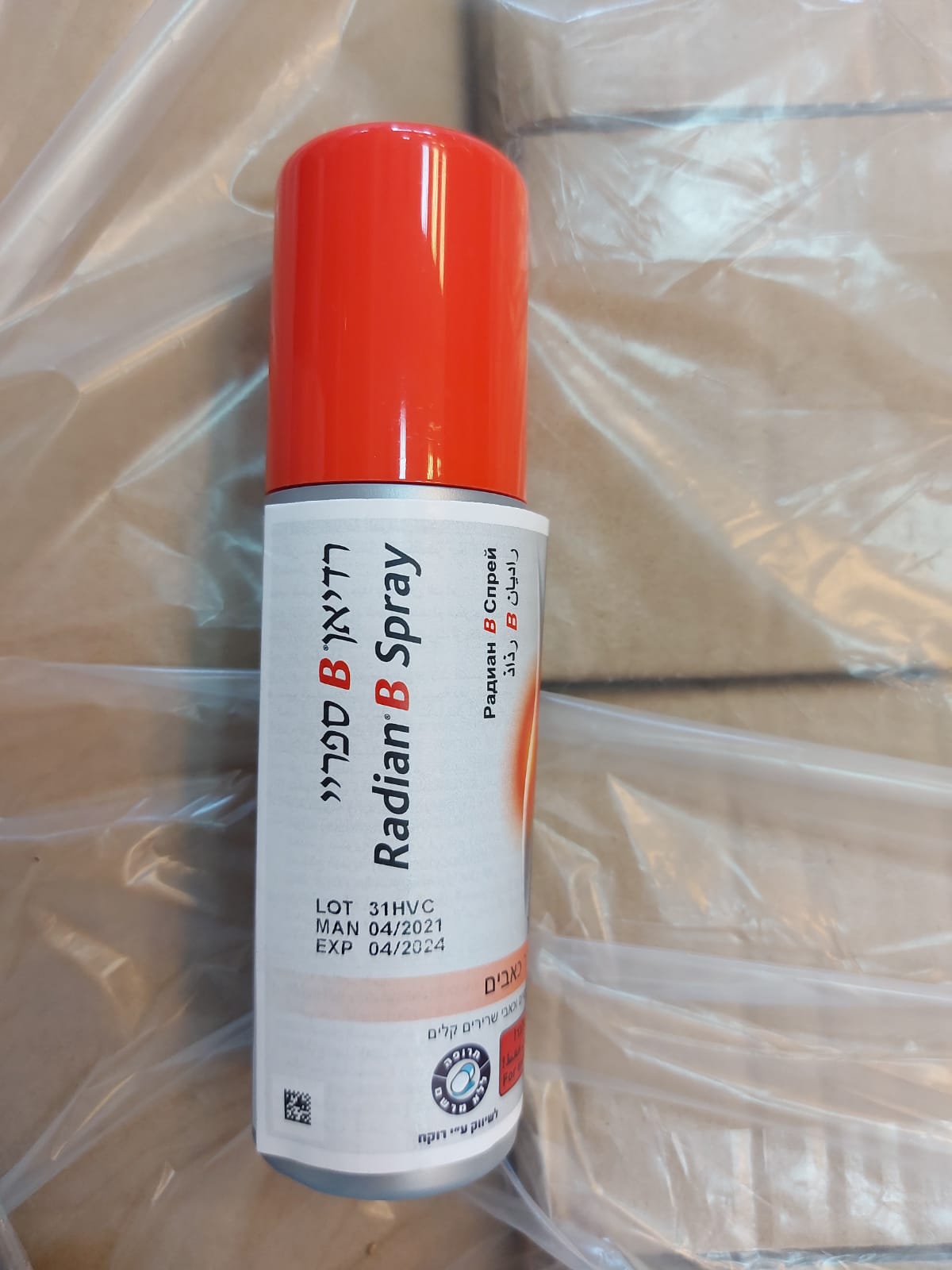Quest for the right Drug

רדיאן בי ספריי RADIAN B SPRAY (ACETYLSALICYLIC ACID, CAMPHOR, MENTHOL, METHYL SALICYLATE)
תרופה במרשם
תרופה בסל
נרקוטיקה
ציטוטוקסיקה
צורת מתן:
חיצוני : TOPICAL
צורת מינון:
ספריי : SPRAY
עלון לרופא
מינוניםPosology התוויות
Indications תופעות לוואי
Adverse reactions התוויות נגד
Contraindications אינטראקציות
Interactions מינון יתר
Overdose הריון/הנקה
Pregnancy & Lactation אוכלוסיות מיוחדות
Special populations תכונות פרמקולוגיות
Pharmacological properties מידע רוקחי
Pharmaceutical particulars אזהרת שימוש
Special Warning עלון לרופא
Physicians Leaflet
Overdose : מינון יתר
4.9 Overdose When used externally as directed, overdose is unlikely. However, symptoms of systemic salicylate poisoning have been reported after the application of salicylates to large areas of skin or for prolonged periods. Salicylism may also occur in the unlikely event of large quantities being ingested. Salicylate poisoning Common features include vomiting, dehydration, tinnitus, vertigo, deafness, sweating, warm extremities with bounding pulses, increased respiratory rate and hyperventilation. Some degree of acid-base disturbance is present in most cases. A mixed respiratory alkalosis and metabolic acidosis with normal or high arterial pH (normal or reduced hydrogen ion concentration) is usual in adults and children over the age of four years. In children aged four years or less, a dominant metabolic acidosis with low arterial pH (raised hydrogen ion concentration) is common. Acidosis may increase salicylate transfer across the blood brain barrier. Uncommon features include haematemesis, hyperpyrexia, hypoglycaemia, hypokalaemia, thrombocytopaenia, increased INR/PTR, intravascular coagulation, renal failure and non- cardiac pulmonary oedema. Central nervous system features including confusion, disorientation, coma and convulsions are less common in adults than in children. Management Activated charcoal may be administered if significant quantities have been ingested within an hour of presentation. The plasma salicylate concentration should be measured, although the severity of poisoning cannot be determined from this alone and the clinical and biochemical features must be taken into account. limination is increased by urinary alkalinisation, which is achieved by the administration of 1.26% sodium bicarbonate. The urine pH should be monitored. Correct metabolic acidosis with intravenous 8.4% sodium bicarbonate (first check serum potassium). Forced diuresis should not be used since it does not enhance salicylate excretion and may cause pulmonary oedema. Haemodialysis is the treatment of choice for severe poisoning and should be considered in patients with plasma salicylate concentrations >700mg/L (5.1mmol/L), or lower concentrations associated with severe clinical or metabolic features. Patients under ten years or over 70 have increased risk of salicylate toxicity and may require dialysis at an earlier stage. Camphor and Menthol Ingestion of the product or excessive use may also lead to camphor poisoning, the symptoms of which include nausea, vomiting, epigastric pain, headache, dizziness, oropharyngeal burning, delirium, muscle twitching, epileptiform convulsions, CNS depression and coma. Breathing is difficult and the breath has a characteristic odour; anuria may occur. Death from respiratory failure or status epilepticus may occur; fatalities in children have been recorded from 1 g. Supportive care, including anticonvulsant therapy, is the mainstay of treatment of camphor intoxication. Gastric lavage may be considered if the patient presents within 1 hour of ingestion; any convulsions must be controlled first. Activated charcoal may be given orally. Ingestion of significant quantities of menthol is reported to cause symptoms similar to those seen after ingestion of camphor, including severe abdominal pain, nausea, vomiting, vertigo, ataxia, drowsiness, and coma; they may be managed similarly.

שימוש לפי פנקס קופ''ח כללית 1994
לא צוין
תאריך הכללה מקורי בסל
לא צוין
הגבלות
לא צוין
מידע נוסף
